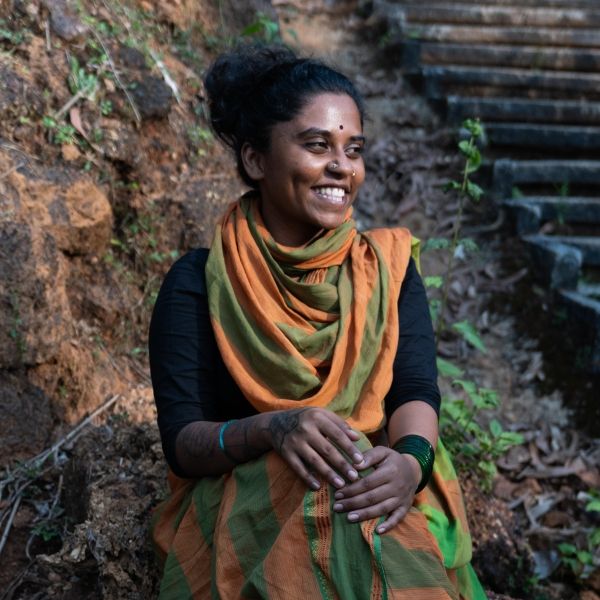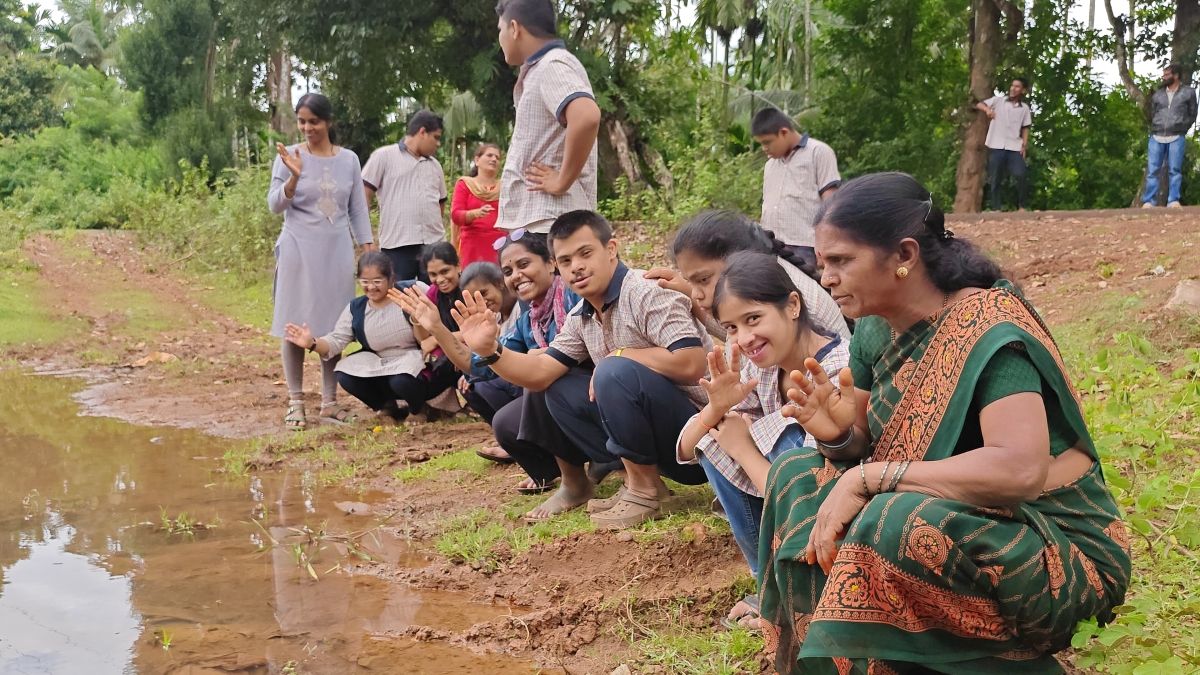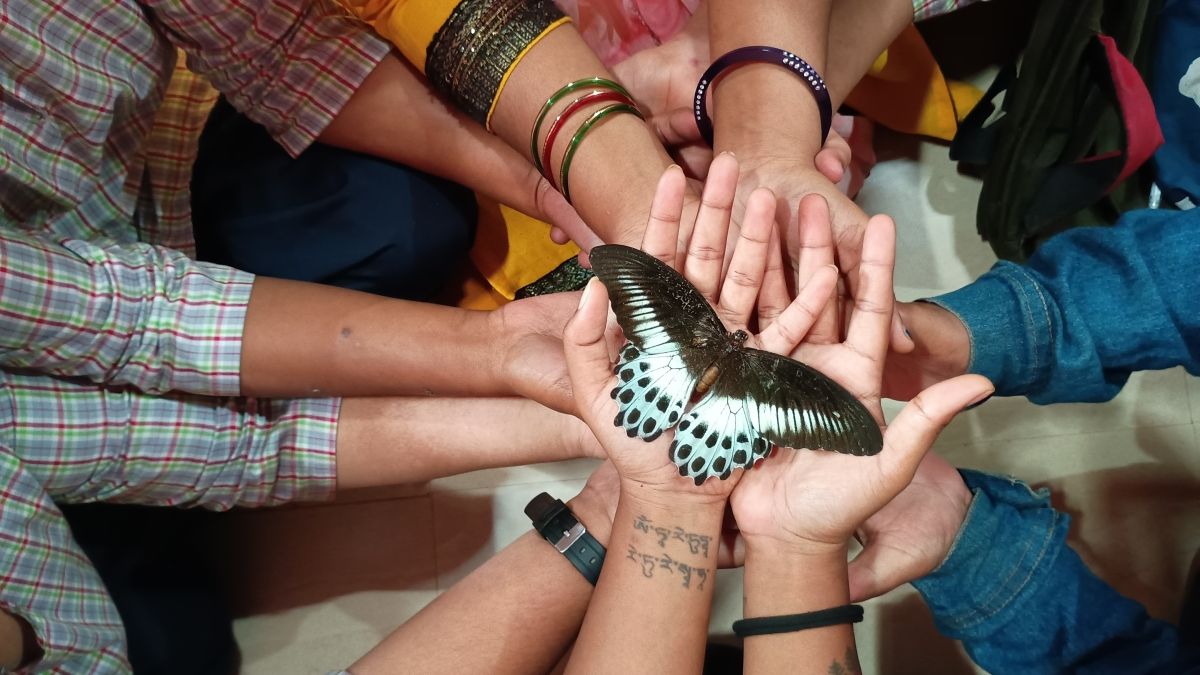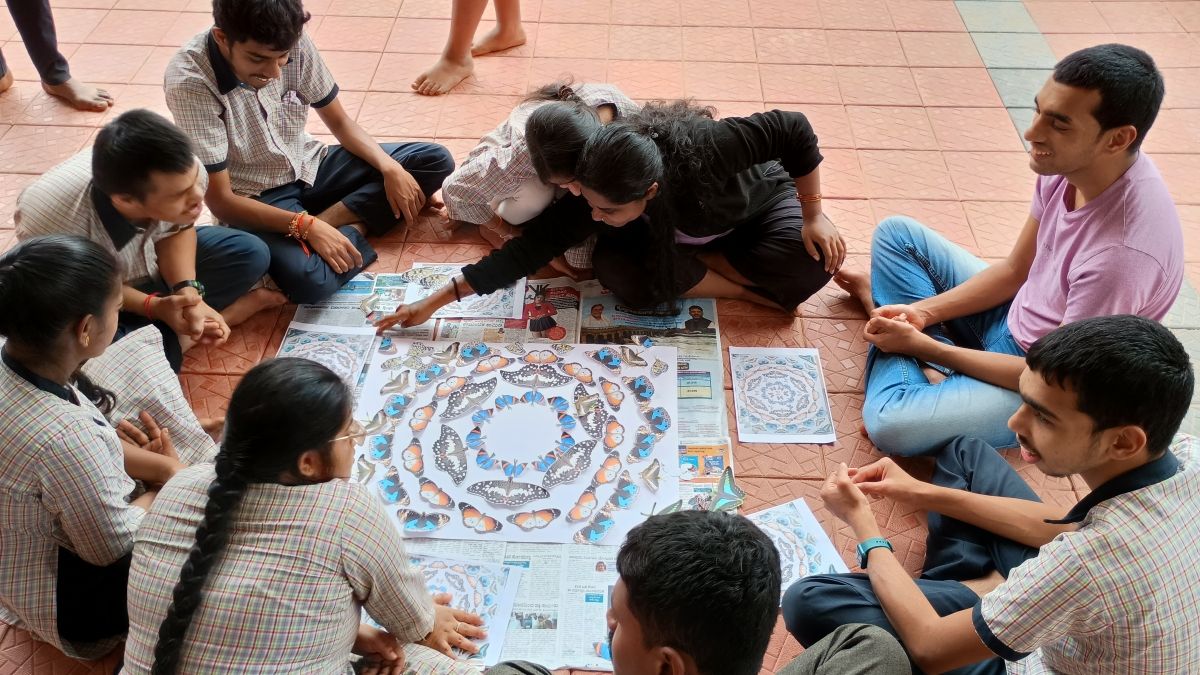Image

-
Anjali Pujari (she/her)
Interdisciplinary Artist and Nature Educator
- 30 Under 30
- 2025
Anjali explores the intersection of art, ecology, and inclusive education, nurturing deeper connections between people, place, and the living world through creative environmental storytelling.
India, Age 26
How are you using education to build more sustainable and equitable communities? Tell us about your EE work and impact.
I believe education begins with listening—not to teachers or textbooks, but to wind, soil, and silence. Through my current project, I work with mentally and intellectually differently-abled children in the forests of Sharavathi, designing sessions where sound becomes a bridge to belonging. Together, we listen to crickets, make music from soil, draw homes shaped like mushrooms, and create rituals that remind us that learning can be gentle, sensory, and sacred.
For children often excluded from conversations about environment or ecology, I try to open portals of wonder—where a fallen leaf or a frog’s song becomes a teacher. These experiences allow them to feel the world through vibration and rhythm, to communicate through resonance rather than words.
My practice also draws from the wisdom of sacred groves, ancient forests where every stone and insect is revered. From there, I learn how to teach not as authority, but as kin.
Sustainability, to me, isn’t a subject; it’s a way of seeing. Through art, sound, and presence, I try to cultivate that seeing, to remind us that caring for the Earth begins with intimacy, not information.
Tell us about your journey to where you are today. What inspired you? What has your path been like?
I was born between two worlds, a farmer’s lineage and Air Force quarters, where discipline met dragonflies, and the wild was never far. My earliest teachers were ants, shadows, and the smell of first rain. I didn’t grow up learning about nature; I grew up inside it, even if it was urban wilderness.
Journalism gave me language but not life. I longed for stories that breathed—so I left the mainstream career for the forest. From living with the Jenu Kuruba and Soliga communities to building a wattle-and-daub house in Kerala, every encounter reshaped what I thought education meant. The land became my syllabus, and silence, my mentor.
Sound became my bridge back to the world. I began to play for animals, listen to rivers, and carve insects out of chalk pieces, fragile prayers for beings on the verge of vanishing. Today, in the Sharavathi forests, I work with mentally and intellectually differently abled children through Sonic Pathways, a project where we learn through sound, soil, and story.
My journey isn’t a career, it’s an ecology of listening. Each place, each creature, each child has been a note in the slow song of remembering that we, too, are nature.
How can people learn more about or support your work?
My work often lives outside walls, in the rustle of leaves during a class, in a child’s laughter echoing through a grove, in the faint hum of a harmonica played for the wind. To know it, one must listen more than look.
You can find glimpses of my journey and my art on social media—chalk sculptures, sound recordings, and writings that emerge from living closely with the Sharavathi forests. Each piece is a quiet invitation to slow down, to sense, to belong.
Collaborations that value slowness, tactility, and local wisdom are always welcome. I also seek ways to bring creative environmental education to rural and special schools, where nature can once again be felt, not just studied.
To learn about my work is to step into a space of listening, where the world is not an object of study, but a living conversation. You’re welcome to reach out to me through LinkedIn if you’d like to know more about my projects or explore ways to support them. I’m currently seeking funding to bring several ongoing and upcoming ideas to life.
A Little More About Me
What advice would you give to the next generation of leaders?
Never stop asking difficult questions, they keep our values alive. Let your ethics be your compass, even when the path feels uncertain.Who (or what) do you look up to as inspiration?
I look up to insects, tiny architects of resilience and to the sky at dusk, whose colors remind me that change can also be beautiful.Where do you feel most at peace and why?
In the forest at dusk, when light turns to sound and everything...trees, breath, memory dissolves into belonging.

By the lake near the school, we listen to water, wind, and each other. Every ripple becomes a lesson in presence and belonging. Photo credit: Adarsh C.

Hands come together to hold a moment of wonder, a Blue Mormon butterfly from the Western Ghats reminding us of fragility, connection, and care. Photo credit: Anjali Pujari

Learning unfolds in circles, where every student, color, and story finds its rhythm in the world of wings. Photo credit: Adarsh C.

At the stall, conversations bloom about chalk sculptures, insects, and the quiet ways nature speaks through our creations. Photo credit: Ritu Yadav

Amid trees and song, Anjali shares the practice of listening — to sound, silence, and everything that breathes between them. Photo credit unknown